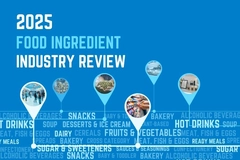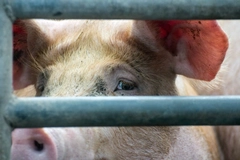
- Industry news
Industry news
- Category news
Category news
- Reports
- Key trends
- Multimedia
- Journal
- Events
- Suppliers
- Home
- Industry news
Industry news
- Category news
Category news
- Reports
- Key trends
- Multimedia
- Events
- Suppliers
Insect protein isolation technique reveals nutritional benefits of powders

12 Jan 2022 --- A team of US researchers are laying the groundwork for developing efficient protein isolation techniques for insects. In a new study, the scientists at West Virginia University have also determined nutritional and functional properties of protein in cricket, locust and silkworm pupae insect powders.
“The global demand for sustainable sources of protein has created a shift from traditional sources like meat to other sources that were otherwise overlooked,” says Kristen Matak, professor of animal and nutritional sciences, West Virginia University, Davis College of agriculture, natural resources and design.
“Edible insects and insect flours are promising as meat alternatives because they are typically rich in protein and contain all of the essential amino acids,” she notes. Insects are growing in popularity as consumers become increasingly concerned with sustainability.
Insects are growing in popularity as consumers become increasingly concerned with sustainability.

Purifying and concentrating protein
The researchers have a patent on a protein isolation procedure that allowed them to isolate protein in insects.
Protein isolation is a process that allows purification and up-concentration of protein from various sources, according to Jacek Jaczynski, professor of food science and muscle food safety.
Protein may be efficiently isolated from insects using pH-solubility-precipitation, the study notes. After isolating the protein, essential amino acids in cricket, locust, silkworm powders were found to exceed recommendations.
Nearly 70% of insect protein dissolved in alkaline pH, while only 7% at pH 4-6. Locust powders were found to contain muscle proteins myosin and actin.
“Insect protein isolates may have high nutritional and functional quality,” the research, published in LWT, highlights.
Viable food production
The growing interest in insect alternatives to animal sources comes as the human population is expected to grow to a predicted 10 billion by 2050, while the overall land mass remains constant.
Traditional animal farming may become a less viable method for food production, the researchers underscore.
The Food & Pandemics Report, produced by ProVeg International, identified the eating and farming of animals as the single most risky human behavior concerning pandemics and called for urgent changes to the global food system to prevent future outbreaks.
Both Jaczynski and Matak stress that as the human population grows, there needs to be a sustainable alternative protein option available.
“I think overall, we have a good handle on carbohydrates, but protein is always behind. That’s why we target protein from those alternative sources like insects to hopefully contribute to less hunger, malnutrition and difficult societal issues,” says Jaczynski.
“As the population grows, we’ll have to feed everyone. I don’t say insects will replace our farm animals, but it’s another alternative that seems more sustainable than what we currently do,” he adds.
Meeting sustainability demands
Insect protein can be harvested much faster than a cow or pig and requires less land and water usage. Insects also have a short lifespan, rapidly reproduce, requiring simple and minimal habitat and nutritional requirements, highlight the researchers.
The harvest cycle for insects is around 45 days, far shorter than four to 36 months for traditional farm animals, they add.
According to Jaczynski, 80% of the global human population already consumes insects. Western cultures make up the 20% that do not. “It’s a minority that doesn’t consume insects.”
With consumers increasingly concerned about the planet, insect appeal has seen a growing interest, with the insect protein market estimated to potentially be worth up to US$8 billion by 2030. Innova Market Insights has crowned ‘Shared Planet’ as the Top Ten Trend for 2022, with consumers more ethically and environmentally conscious. Around 80% of the global population already consumes insects.
Around 80% of the global population already consumes insects.
Overcoming challenges
A key issue in mainstreaming insect consumption is the ick-factor which the researchers highlight could be overcome by turning the insect into powder. This is likened to how grains are processed into flour to make it more edible.
The scientists highlight that although insect powders are a simple and convenient method to increase shelf life, the original composition poses an obstacle in their food product applications.
Nonetheless, developments are moving fast, with projects aiming to drive the popularity and sustainability of insect-derived products.
This has also resulted in EU greenlighting the first insect food products made from yellow mealworm and the European Food Safety Authority declaring migratory locusts (Locusta migratoria) safe for human consumption in both frozen and dried formats.
Whey-ing up competition
Whey protein currently dominates the protein market, as various isolation processes can remove water, fat and carbohydrates from milk, resulting in whey protein isolate or purified and up-concentrated protein.
Nonetheless, it is slowly seeing growing competition from alternatives such as cricket protein, which touts a 50% more digestibility. Recently, e-commerce company MYProtein launched THE ioPea, marketed as the first-plant-based protein touted as matching the nutritional attributes of whey.
Dairy giant FrieslandCampina Ingredients is also moving into the plant-based protein arena with two new powder solutions developed with AGT Foods.
By Andria Kades










